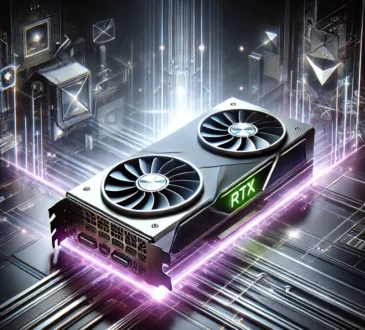Breakthroughs in Photonic Computing Could Revolutionize Artificial Intelligence
The quest for human-level artificial general intelligence (AGI) has been ongoing for decades, with researchers exploring various paths to achieve this goal. Recently, two significant breakthroughs in the field of photonic computing have shed new light on the potential for developing AGI.
A New Era for Artificial General Intelligence
Artificial general intelligence (AGI) is a theoretical concept that refers to a machine capable of performing any intellectual task that a human being can. While AGI is not yet a reality, researchers are actively exploring various approaches to achieve this goal. One popular method involves the use of generative pre-trained transformers (GPTs), but some experts argue that GPTs may be a dead end on the path to AGI.
The recent breakthroughs in photonic computing offer a potential alternative to traditional computing methods. By using light instead of electricity, photonic computers can process information more efficiently and at faster speeds. This innovation could potentially push GPT models beyond their current limitations and bring us closer to achieving AGI.
How Photonic Computing Works
Photonic computers work by using light pulses to represent information. This approach offers several advantages over traditional computing methods, including:
- Faster processing speeds: Light travels at the speed of light, allowing for faster data transfer and processing.
- Lower energy consumption: Photonic computers use less energy than traditional computers, making them more sustainable.
- Increased scalability: Photonic computers can be easily scaled up or down depending on the application.
A Bright Future for Photonic AI
The recent breakthroughs in photonic computing offer a promising solution to the challenge of developing AGI. By using light-based computing techniques, researchers can develop more efficient and powerful AI models that are capable of processing vast amounts of information.
As we look to the future, it’s clear that photonic AI chips will play a significant role in the development of AGI. With their ability to process information at faster speeds and lower energy consumption, photonic computers offer a viable alternative to traditional computing methods.
What’s Next?
The breakthroughs in photonic computing are just the beginning. As researchers continue to explore the potential of photonic technology, we can expect to see significant advancements in AI development. Some potential next steps include:
- Developing more efficient photonic materials: Researchers are working on developing new materials that can improve the efficiency of photonic computers.
- Scaling up photonic computing: Researchers are exploring ways to scale up photonic computing to larger systems, such as data centers.
- Integrating photonic computing with other technologies: Researchers are exploring ways to integrate photonic computing with other technologies, such as quantum computing and neuromorphic computing.
Conclusion
The breakthroughs in photonic computing represent a significant milestone on the path to achieving human-level artificial intelligence. As researchers continue to explore the potential of photonic technology, we can expect to see significant advancements in AI development and a brighter future for humanity.




